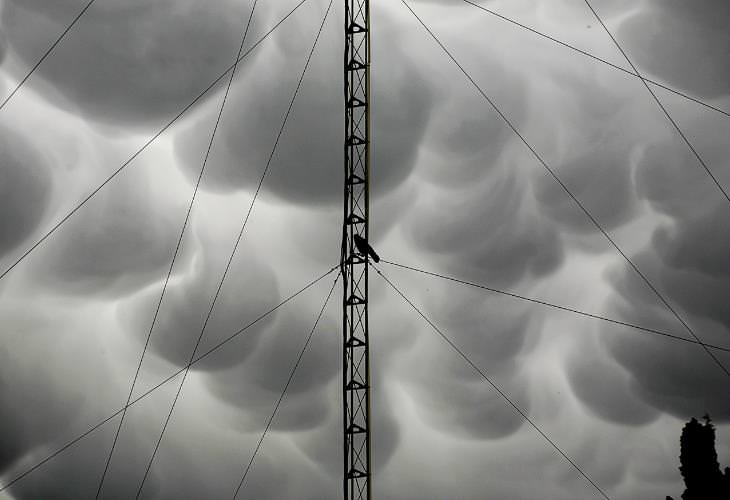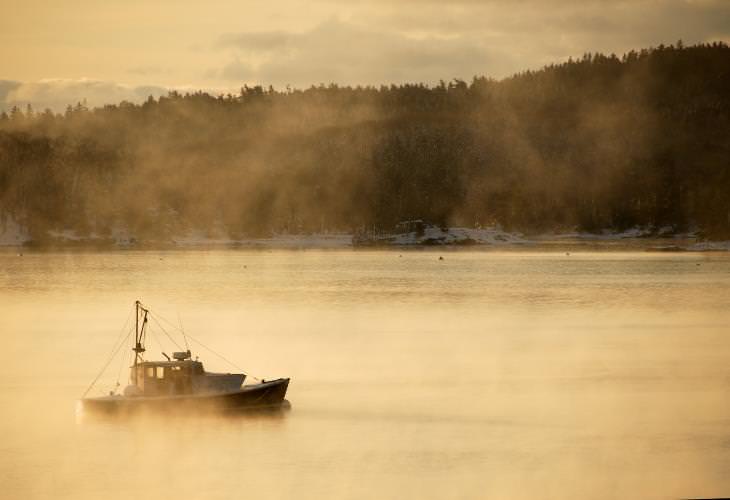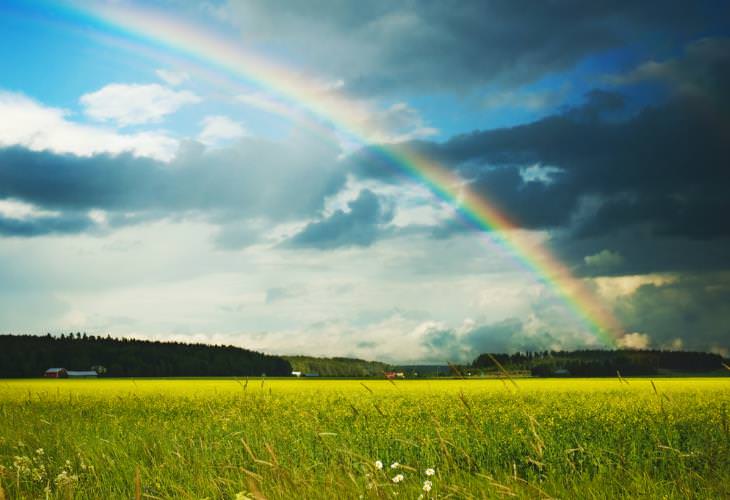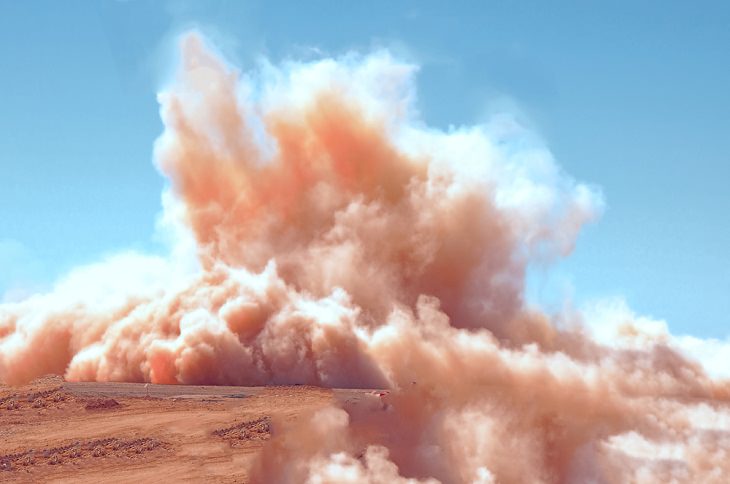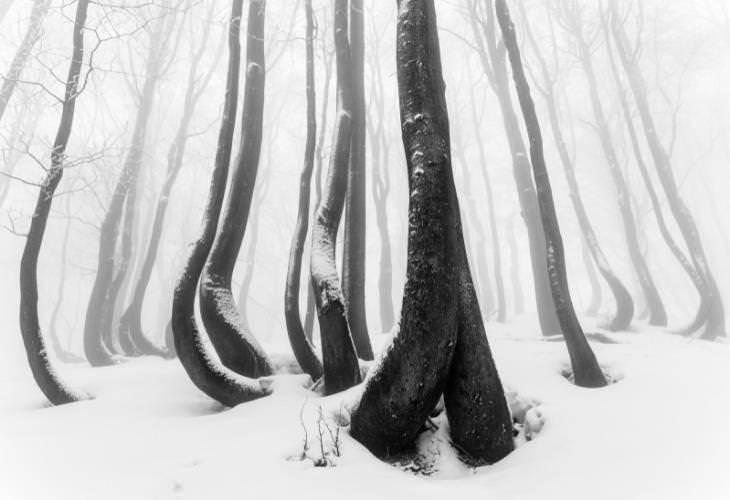When you read your local weather forecast, you often come across many typical terms like 'partly cloudy', 'humidity', 'precipitation', 'cloud cover', 'dew', the list goes on. But do you know what the phrase "whale's mouth cloud" means? Also, what do “drunken forests,” “monkey’s wedding,” and “bombogenesis” imply? No, we aren’t making these terms up.
Although less common, these meteorological terms are all part of the glossary, and they have really interesting meanings. Today, we will take a look at a few little-known, unusual, and fascinating terms that will help you understand the weather just a little bit better.
1. Whale's Mouth Cloud
This phrase refers to massive dark cloud formations that give the impression of being consumed by a giant whale. According to weather experts, these unique clouds are formed when cold dense air rushing out of a thunderstorm clashes with warm air entering the storm.
2. Thundersnow
Also called a winter thunderstorm or a thundersnowstorm, this phenomenon is not very different from an average thunderstorm and can be described as thunder and lightning during a snowstorm. Thundersnows are rare and are estimated to occur in only 0.07 percent of snowstorms in the US. However, they are even more dangerous than a regular thunderstorm, as they affect visibility and bring in lightning strikes.
3. Bombogenesis
As weird as it sounds, this is a common winter occurrence and is described as “a mid-latitude cyclone that rapidly intensifies” by the National Ocean Service. Also called cyclogenesis, this phenomenon usually starts as a normal cyclone but intensifies pretty fiercely over 24 hours where it drops at least 24 MB (a unit of pressure). This can happen when a cold air mass collides with a warm air mass (air over warm ocean waters, for example). This fierce weather system then goes on to create what is known as a bomb cyclone, leading to hurricane-force winds and heavy snow or rainfall.
4. Mammatus Clouds
Consider yourself lucky if you ever come across Mammatus clouds. These unusual and distinctive cloud formations are blob-like or pouch-like in shape. and they emerge from the base of clouds. While they are usually associated with thunderstorms and look menacing, they aren’t necessarily a sign of rough weather.
Mammatus clouds can stretch out across dozens of miles and vary in shape. According to weather experts, these clouds are formed when ice crystals fall out of the cumulonimbus cloud's (a dense, towering vertical cloud) anvil. The ice crystals change from ice to water vapor as they fall, reversing the usual cloud-forming process of upward rise and causing an uneven cloud base.
5. Sea Smoke
In simple words, sea smoke is fog above the water. This happens when freezing winds flow across warmer water and cause moisture to condense into fog. That swirly cover of fog can take the shape of a giant wave and look pretty dangerous.
6. Monkey's Wedding
This is a well-known South African expression that refers to a rain shower that occurs while the sun is shining, or, in other words, a sun shower. These conditions almost always result in a rainbow. But why the curious name? The term is a translation of the Zulu phrase umshado wezinkawu, or "a wedding for monkeys,” and is used in the United States, Canada, Australia, New Zealand, Ireland, and Britain. Furthermore, the phenomenon has similar folkloric names in cultures around the world.
7. Frazil
Frazil is a small needle-like ice crystal formed when the surface of a body of water (such as a lake, river, and ocean) loses heat to cooler air above and freeze. In open, calm waters, frazil crystals form a smooth, thin film of ice that resembles an oil slick. If the water is turbulent, frazil crystals cumulate into slushy circular disks called pancake ice.
Interestingly, these water crystals have ineffective buoyancy and can be carried to the bottom very easily. Once there, they quickly stick to objects in the water. If they keep accumulating uninterrupted, they can restrict or even block water flow.
8. Haboob
A haboob is a violent dust storm or sand storm that occurs in sandy, dusty areas with extremely dry conditions, such as the deserts of North Africa and Arabia or on the plains of India. These intense dust storms usually happen as a result of a thunderstorm and last about three hours. The name comes from the Arabic word habb, which means "wind.”
A haboob may carry massive amounts of sand or dust while moving as a thick wall that can reach as high as 1,000 meters (about 3,300 feet).
9. Drunken Trees
Drunken trees refer to a stand of trees in a forest that is slanted. This happens because of melting permafrost – any type of ground that has been frozen continuously for a minimum of two years. Permafrost is found in the planet’s poles and in other cold climes, such as the Arctic regions of Siberia, Canada, Greenland, and Alaska. When this permafrost begins to melt, the floor buckles and sinks, and the trees grow at unusual angles. Sometimes, the trees can’t survive the stress and collapse. At other times, they continue to grow and straighten themselves up to a vertical positing.
Environmental scientists say that climate change is the primary reason behind much of the frozen grounds all over the world melting at an alarming rate.
Share these words with friends and family...

